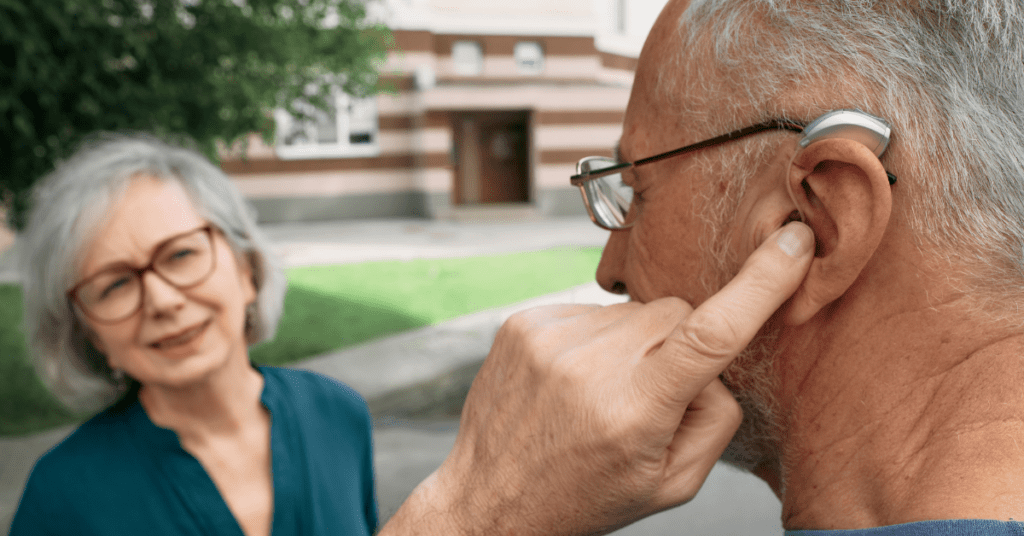To fully understand mixed hearing loss, you must first become acquainted with the fundamental anatomy of the ear. The ear is divided into three primary sections: the outer, middle, and inner ear. Each of these segments has distinct structures and roles, collaboratively facilitating the process of sound capture and interpretation, and disturbances to these areas can potentially lead to hearing loss and hearing problems.
- Outer Ear: This part consists of the pinna, ear canal, and tympanic membrane (commonly known as the eardrum).
- Middle Ear: This section encompasses the eardrum or tympanic membrane, the ossicles (bones of the middle ear), the tensor tympani and stapedius muscles, and the Eustachian tubes.
- Inner Ear: Often referred to as the Cochlea, the inner ear contains tiny hair cells (stereocilia), auditory nerve or hearing nerve fibers, and the semicircular canals which govern the vestibular system, crucial for our body’s balance.
What Is Mixed Hearing Loss?
Mixed hearing loss refers to a condition where both the inner ear, as well as the outer or middle ear, have sustained damage. Essentially, it’s a combination of conductive and sensorineural hearing loss.
For instance, if someone has been exposed to loud sounds and loud noises that lead to sensorineural damage in the inner ear, and simultaneously has fluid in the middle ear, the resulting impairment could be a more severe hearing loss than if only one of these issues was present. This compounded effect makes it notably more challenging to hear.
What Causes Mixed Hearing Loss?


Understanding The Causes Of Sensorineural Hearing Loss:
Sensorineural hearing loss can arise from various factors, including:
- Exposure to loud noises leading to noise-induced hearing loss.
- The natural aging process resulting in age-related hearing loss.
- Ototoxic damage that affects the inner ear structures.
- Certain illnesses.
- Injuries to the head, including head trauma.
- Congenital deformities present from birth.
Understanding The Causes Of Conductive Hearing Loss:



Conductive hearing loss can stem from a variety of issues, such as:
- Fluid accumulation in the middle ear due to colds or seasonal allergies.
- Ear infections, including otitis media or otitis external, which is commonly known as swimmer’s ear.
- Eustachian Tube Dysfunction
- This vital tube connects the middle ear to the nose and throat, ensuring that it receives fresh air at a pressure equal to the external environment. If an infection results in fluid build-up within the air-filled middle ear cavity, the Eustachian tube typically facilitates drainage. However, if it’s malfunctioning, fluid retention can escalate, often leading to infections.
- Perforated eardrum, which can occur due to trauma or repeated infections of the ear.
- Benign tumors
- While not cancerous, these can obstruct sound waves in the outer or middle ear.
- Ear wax blockages within the ear canal.
- Congenital deformities in the middle ear
- Conditions like atresia or microtia, where the outer ear canal might be absent or the outer ear is notably small, are examples.
- Otosclerosis
- This ailment causes the middle ear’s bones to stiffen and remain immobile, impeding the transmission of sound through the auditory system.
Understanding Causes Of Mixed Hearing Loss:
Mixed hearing loss arises from a combination of both sensorineural and conductive hearing loss. Essentially, any pairing of the previously mentioned causes can lead to this type of hearing impairment.



For instance, factors affecting mixed hearing loss include:
- Age-related hearing loss combined with an ear wax blockage.
- Noise-induced hearing loss paired with an ear infection.
- A history of ototoxic exposure from chemotherapy alongside fluid accumulation due to seasonal allergies.
Treating Mixed Hearing Loss
Addressing mixed hearing loss requires a comprehensive approach, targeting both its sensorineural and conductive components.
Hearing Aids
These devices primarily address sensorineural hearing loss, but also work for mixed hearing loss. They work by compensating for damage to the inner ear structures, amplifying soft sounds, minimizing background noise, and enhancing speech clarity. While hearing aids are the predominant treatment for sensorineural hearing loss, cochlear implants become the solution when patients have profound hearing loss that becomes too severe for hearing aids to be effective.
Medical Or Surgical Intervention:
The specific cause of the conductive hearing loss dictates the suitable treatment:
- Ear Infections: Typically treated with antibiotics or steroid therapies.
- Ear Wax Blockages: Often manually cleared using curettes or flushed out with water.
- Eardrum Perforations: A surgical procedure known as tympanoplasty is employed to patch the perforated eardrum.
- Otosclerosis: The surgical procedure, stapedectomy, involves the removal of the stapes (a small ossicle) and its replacement with a prosthesis.
- Fluid Build-up from Colds or Allergies: This is commonly addressed with sinus rinses or allergy nasal sprays.



Consultation with an otolaryngologist, or an Ear, Nose, and Throat (ENT) physician, is crucial when considering treatments for mixed hearing loss, especially those involving potential medical or surgical procedures.
Treble Health Can Help You Manage Mixed Hearing Loss
Treble Health specializes in tinnitus treatment, but our experienced team is also well-equipped to address various types of hearing loss. To determine if you are experiencing hearing loss, we recommend starting with a comprehensive hearing exam. Based on your test results, our team of audiologists will work with you to devise a tailored treatment plan targeting the root cause of your issue. Rest assured, whether your optimal treatment involves hearing aids, surgery, medication, or other interventions, we have decades of experience helping individuals reclaim the quality of life they once enjoyed. Begin your journey to better hearing with a complimentary telehealth consultation today.

















